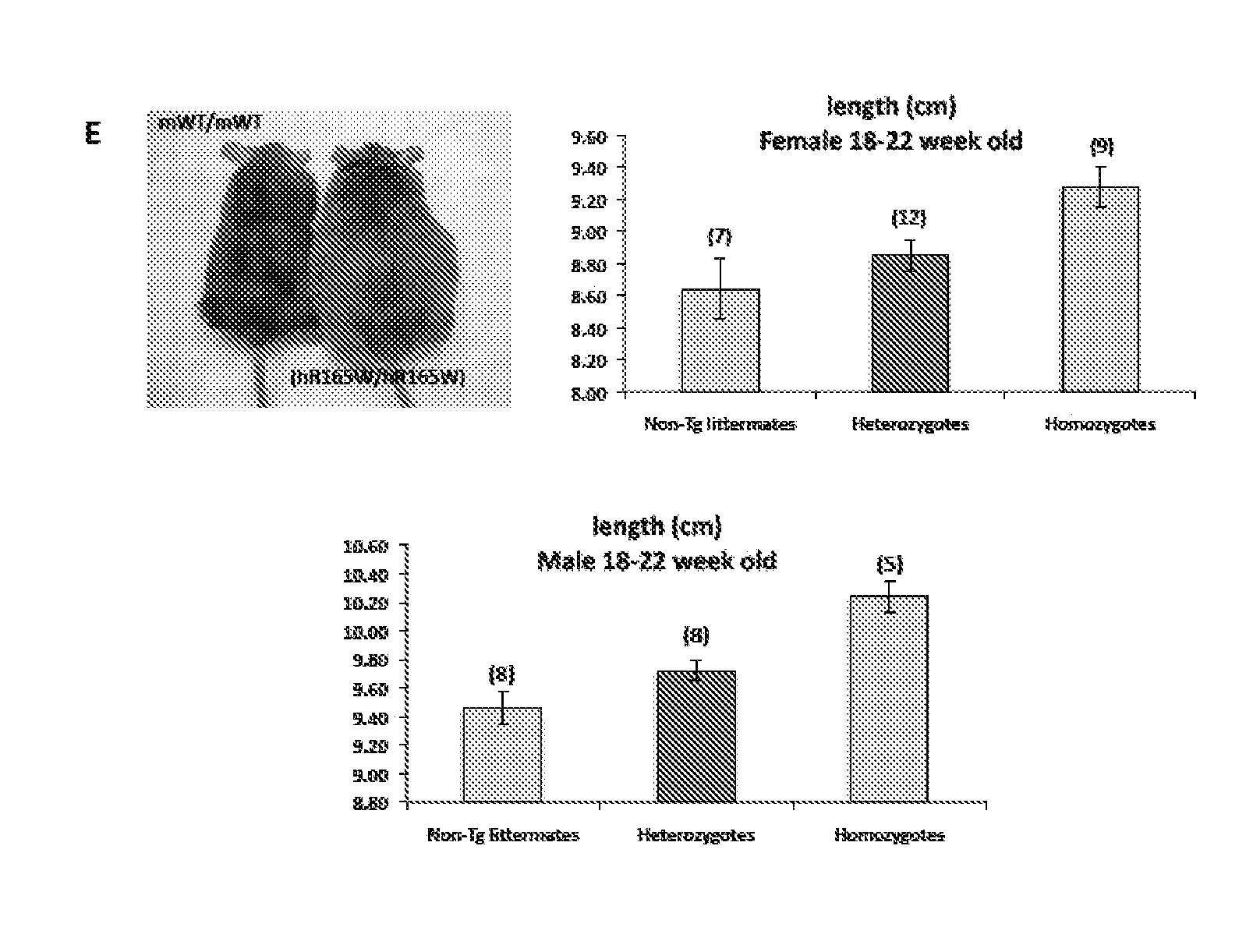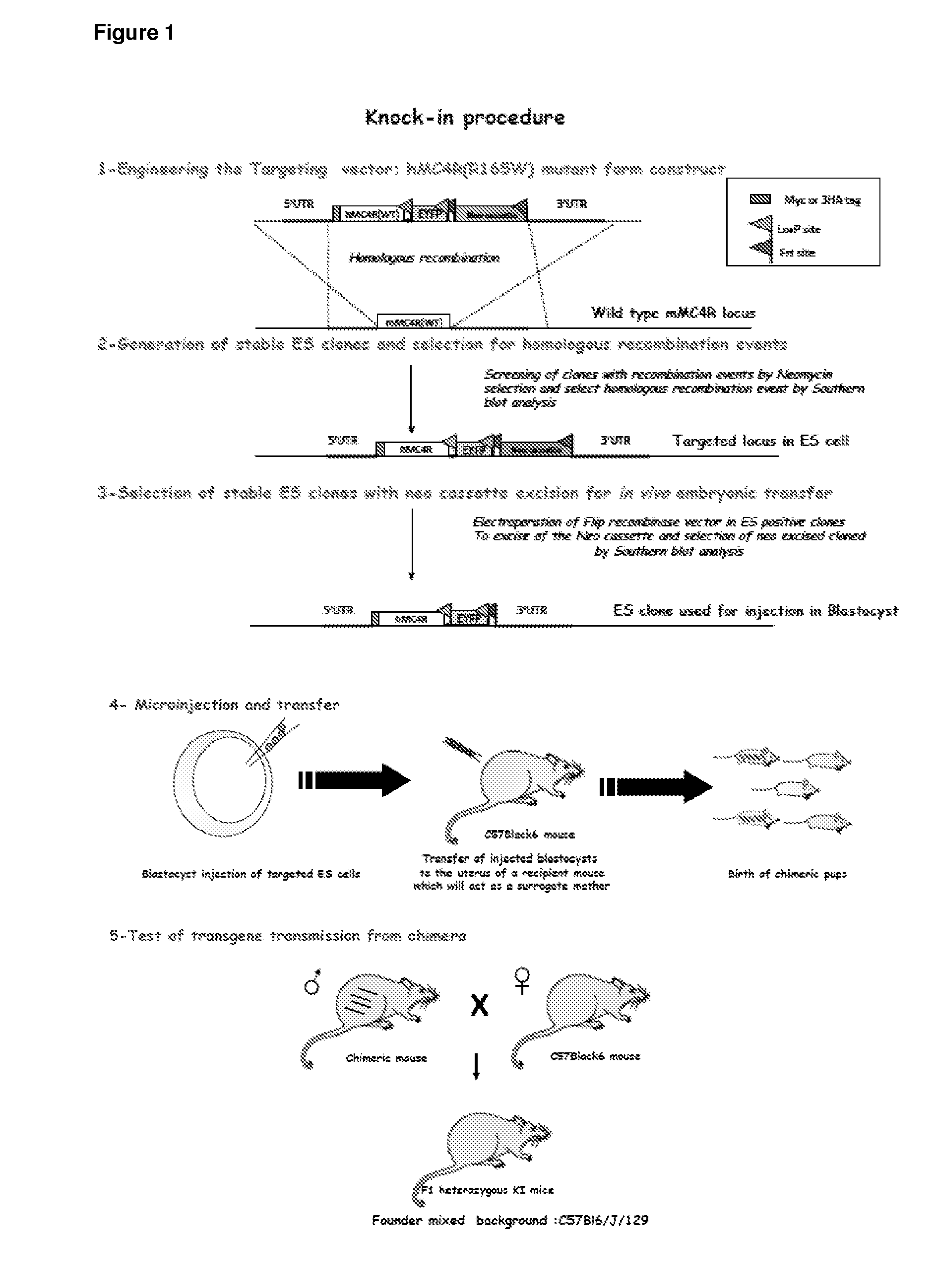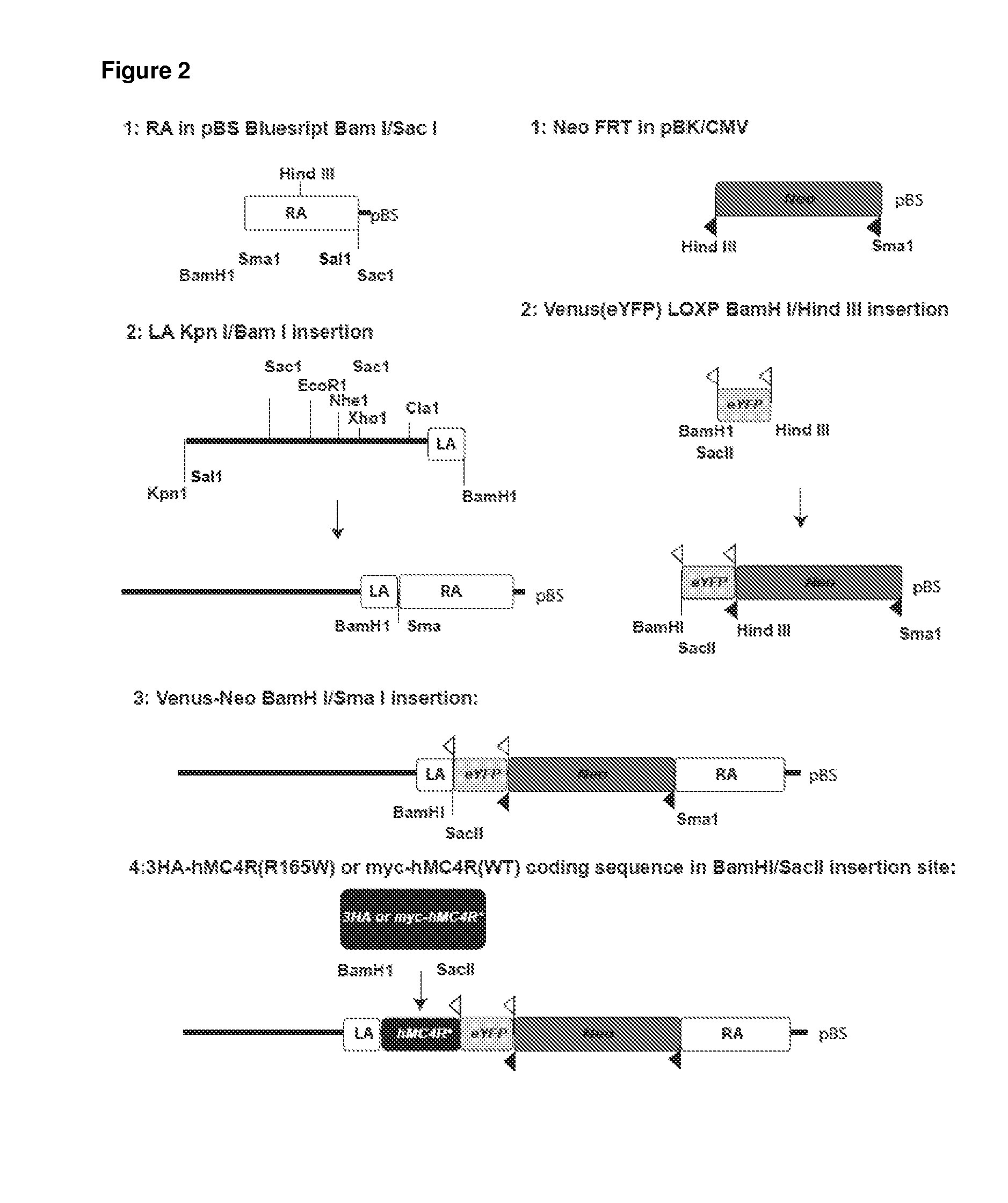Transgenic mouse models for mc4r
a mouse model and mouse technology, applied in the field of knockin mouse models for human melanocortin type 4 receptor, can solve the problems of reduced cell surface expression, concomitant loss of function, and high cost, and achieve the effect of removing the function of the receptor
- Summary
- Abstract
- Description
- Claims
- Application Information
AI Technical Summary
Benefits of technology
Problems solved by technology
Method used
Image
Examples
example 1
Generation of Knock-in Mouse Model
[0132]A knock-in mouse model carrying either a double tagged obesity-causing mutant form of human melanocortin 4 receptor (hMC4R) or a double-tagged wild-type form of hMC4R at the mouse MC4R locus was generated. For the knock-in procedure, the following steps were followed: i) a targeting vector was engineered; ii) stable ES clones were generated and selected for homologous recombination events; iii) stable ES clones were selected with neo cassette excision for in vivo embryonic transfer; iv) microinjection and transfer was performed; v) transgene transmission from chimera was tested, to determine whether colonization of the germ line occurred; vi) male founders for generation of a mouse line were selected; and vii) a lineage on mixed background was started. A schematic diagram illustrating these steps is shown in FIG. 1.
[0133]The “knock-in” mouse lines generated here express either an obesity-causing mutant form of the human MC4R (hMC4R) or a wild-...
example 2
Phenotypic Characterization of Knock-in Mouse Model Carrying Human Mutant Form of MC4R
[0144]To determine hMC4R(R165W) brain expression in our Knock-in mouse model, immunohistochemistry was performed on frozen brain slices from heterozygous knock-in mice using anti-GFP antibody and DAB labeling. GFP immunoreactivity was detected in neurons located in the paraventricular nucleus known to express MC4R, confirming expression of the mutant allele (FIG. 7A).
[0145]F2 animals were maintained on a chow diet ad libitum and their weight was monitored regularly. The weight of MC4R-knock-in mice and their wild-type littermates was largely indistinguishable for the first 4 weeks. However, by approximately 5 weeks of age, most of the homozygous mutants, both male and female, were heavier than their wild-type siblings of the same sex, and by 7 weeks of age all of the homozygous hMC4R (R165W) mutant mice were heavier than controls (FIG. 7B). By 15 weeks of age, homozygous mutant females were on aver...
example 3
Phenotypic Characterization of a Knock-in Mouse Model Carrying Human Wild-Type Form of MC4R
[0150]In addition to transgenic mice bearing the hMC4R mutant gene (hMC4R(R165W)), knock-in transgenic mice wherein the murine MC4R gene was replaced by the wild-type human MC4R gene (hMC4R(WT)) flanked by a myc tag at the N-terminus and a YFP venus protein at the C-terminus were also generated, using standard procedures such as those described herein. Expression of the wild-type human MC4R transgene (hMC4R(WT)) on frozen brain slices from heterozygous knock-in mice was assessed by immunohistochemistry using anti-GFP antibody and DAB labeling (FIG. 8A). Animals homozygous for the hMC4R(WT) transgene developed excess weight with age and increased fat mass, without modifying significantly their food intake. This increase in weight was about 2-fold less than that observed in mice homozygous for hMC4R(R165W). Moreover, these mice did not show any increase in longitudinal size (snout-anus length)(F...
PUM
| Property | Measurement | Unit |
|---|---|---|
| temperature | aaaaa | aaaaa |
| yellow fluorescent | aaaaa | aaaaa |
| fat mass | aaaaa | aaaaa |
Abstract
Description
Claims
Application Information
 Login to View More
Login to View More - R&D
- Intellectual Property
- Life Sciences
- Materials
- Tech Scout
- Unparalleled Data Quality
- Higher Quality Content
- 60% Fewer Hallucinations
Browse by: Latest US Patents, China's latest patents, Technical Efficacy Thesaurus, Application Domain, Technology Topic, Popular Technical Reports.
© 2025 PatSnap. All rights reserved.Legal|Privacy policy|Modern Slavery Act Transparency Statement|Sitemap|About US| Contact US: help@patsnap.com



